Instructions to use this book:
The Questions and their answers have been separated in different sections to ensure you dont accidently peek at the answers. To check the answers, a convenient link has been placed at the end of the question which will take you to the Answer and the explanation.
To come back to the Question you were reading, two links have been placed, one before the explanation & the other after the explanation.
There are handy references embedded as hyperlinks that will directly open the webpage on your Kindle, mobile, or computer.
While weve made our best efforts to ensure the information is correct in this book, if you find any errors, or have questions, please reach out to us at
Scroll to the next page to begin.
Disclaimer :
Although the author and publisher have made every effort to ensure that the information in this book was correct at press time, the author and publisher do not assume and hereby disclaim any liability to any party for any loss, damage, or disruption caused by errors or omissions, whether such errors or omissions result from negligence, accident, or any other cause.
Question #1
A commercial bank has designed their next generation online banking platform to use a distributed system architecture. As their Software Architect, you must ensure that their architecture is highly scalable, yet still cost-effective.
Which of the following will provide the most suitable solution for this scenario?
- Launch an Auto-Scaling group of EC2 instances to host your application services and an SQS queue. Include an Auto Scaling trigger to watch the SQS queue size which will either scale in or scale out the number of EC2 instances based on the queue.
- Launch multiple EC2 instances behind an Application Load Balancer to host your application services, and SWF which will act as a highly-scalable buffer that stores messages as they travel between distributed applications.
- Launch multiple EC2 instances behind an Application Load Balancer to host your application services and SNS which will act as a highly-scalable buffer that stores messages as they travel between distributed applications.
- Launch multiple On-Demand EC2 instances to host your application services and an SQS queue which will act as a highly-scalable buffer that stores messages as they travel between distributed applications.
Question #2
You are working as a Solutions Architect in a global investment bank which requires corporate IT governance and cost oversight of all their AWS resources across their divisions around the world. Their corporate divisions want to maintain administrative control of the discrete AWS resources they consume and ensure that those resources are separate from other divisions.
Which of the following options will support the autonomy of each corporate division while enabling the corporate IT to maintain governance and cost oversight? (Select TWO.)
- Use AWS Trusted Advisor
- Create separate Availability Zones for each division within the corporate IT AWS account.
- Create separate VPCs for each division within the corporate IT AWS account.
- Use AWS Consolidated Billing by creating AWS Organizations to link the divisions accounts to a parent corporate account.
- Enable IAM cross-account access for all corporate IT administrators in each child account.
Question #3
You are trying to enable Cross-Region Replication to your S3 bucket but this option is disabled.
Which of the following options is a valid reason for this?
- The Cross-Region Replication feature is only available for Amazon S3 - RRS.
- This is a premium feature which is only for AWS Enterprise accounts.
- In order to use the Cross-Region Replication feature in S3, you need to first enable versioning on the bucket.
- The Cross-Region Replication feature is only available for Amazon S3 - Infrequent Access.
Question #4
A game company has a requirement of load balancing the incoming TCP traffic at the transport level (Layer 4) to their containerized gaming servers hosted in AWS Fargate. To maintain performance, it should handle millions of requests per second sent by gamers around the globe while maintaining ultra-low latencies.
Which of the following must be implemented in the current architecture to satisfy the new requirement?
- Launch a new Network Load Balancer.
- Launch a new microservice in AWS Fargate that acts as a load balancer since using an ALB or NLB with Fargate is not possible.
- Create a new record in Amazon Route 53 with Weighted Routing policy to load balance the incoming traffic.
- Launch a new Application Load Balancer.
Question #5
You are instructed by your manager to create a publicly accessible EC2 instance by using an Elastic IP (EIP) address and to give him a report on how much it will cost to use that EIP.
Which of the following statements is correct regarding the pricing of EIP?
- There is no cost if the instance is terminated and it has only one associated EIP.
- There is no cost if the instance is running and it has only one associated EIP.
- There is no cost if the instance is stopped and it has only one associated EIP.
- There is no cost if the instance is running and it has at least two associated EIP.
Question #6
There is a technical requirement by a financial firm that does online credit card processing to have a secure application environment on AWS. They are trying to decide on whether to use KMS or CloudHSM.
Which of the following statements is right when it comes to CloudHSM and KMS?
- AWS CloudHSM should always be used for any payment transactions.
- No major difference. They both do the same thing.
- You should consider using AWS CloudHSM over AWS KMS if you require your keys stored in dedicated, third-party validated hardware security modules under your exclusive control.
- If you want a managed service for creating and controlling your encryption keys but don't want or need to operate your own HSM, consider using AWS CloudHSM.
Question #7
You are working as a Cloud Engineer in a leading technology consulting firm which is using a fleet of Windows-based EC2 instances with IPv4 addresses launched in a private subnet. Several software installed in the EC2 instances are required to be updated via the Internet.
Which of the following services can provide you with a highly available solution to safely allow the instances to fetch the software patches from the Internet but prevent outside network from initiating a connection?
- Egress-Only Internet Gateway
- NAT Gateway
- VPC Endpoint
- NAT Instance
Question #8
You are working for a weather station in Asia with a weather monitoring system that needs to be migrated to AWS. Since the monitoring system requires a low network latency and high network throughput, you decided to launch your EC2 instances to a new cluster placement group. The system was working fine for a couple of weeks, however, when you try to add new instances to the placement group that already has running EC2 instances, you receive an 'insufficient capacity error'.
How will you fix this issue?
- Stop and restart the instances in the Placement Group and then try the launch again.
- Verify all running instances are of the same size and type and then try the launch again.
- Submit a capacity increase request to AWS as you are initially limited to only 12 instances per Placement Group.
- Create another Placement Group and launch the new instances in the new group.


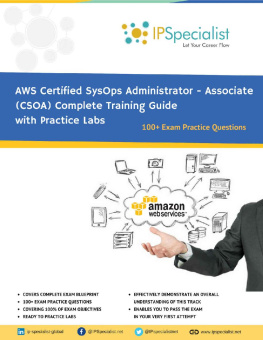
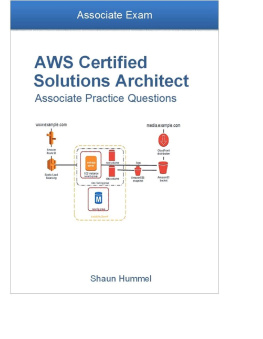
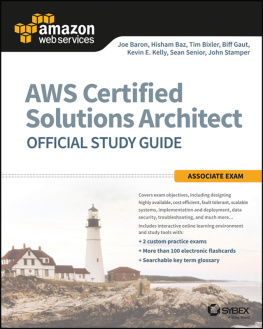
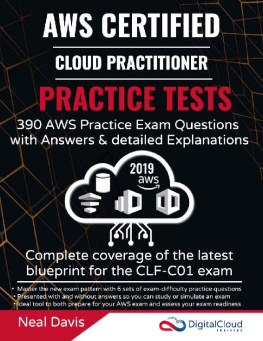
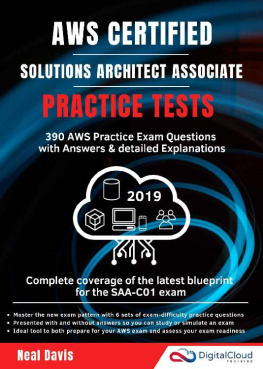
![Anthony Sequeira [Anthony Sequeira] - AWS Certified Solutions Architect - Associate (SAA-C01) Cert Guide, First Edition](/uploads/posts/book/124070/thumbs/anthony-sequeira-anthony-sequeira-aws-certified.jpg)